Purpose: The purpose of this study is to investigate the regional chest wall volume changes during various breathing maneuvers in normal men with an optical reflectance system (OR), which tracks reflective markers in three dimensions. Methods: Chest wall volume was measured by the OR system [V
L(CW)], and lung volume was measured by hot wire spirometry [V
L(SP)] in 15 healthy men during quiet breathing (QB), during breathing at a rate of 50 tidal breaths/min paced using a metronome (MT: metronome-paced tachypnea), and during a maximal forced inspiratory and expiratory maneuver (MFIE maneuver). Results: There were few discrepancies between V
L(CW) and VL(SP) for QB and MT. In the MFIE maneuver, however V
L(CW) was often underestimated compared with V
L(SP), particularly during forced maximal expiration, because of pulmonary rib cage volume changes. Furthermore, the regional chest wall volume changes were affected by breathing maneuver alternation. In the pulmonary and abdominal rib cage, inspiratory reserve volume was larger than expiratory reserve volume, respectively, and in the abdomen, expiratory reserve volume was larger than inspiratory reserve volume. Conclusion: Alternation of breathing maneuvers affects regional chest wall volume changes.
抄録全体を表示
